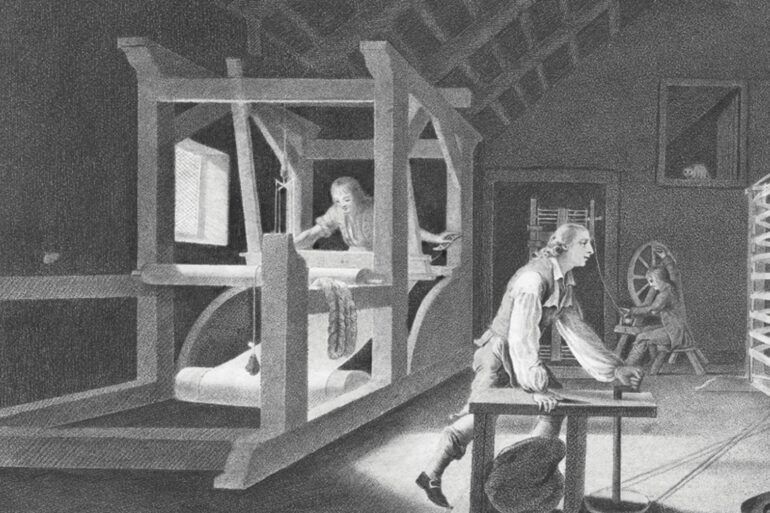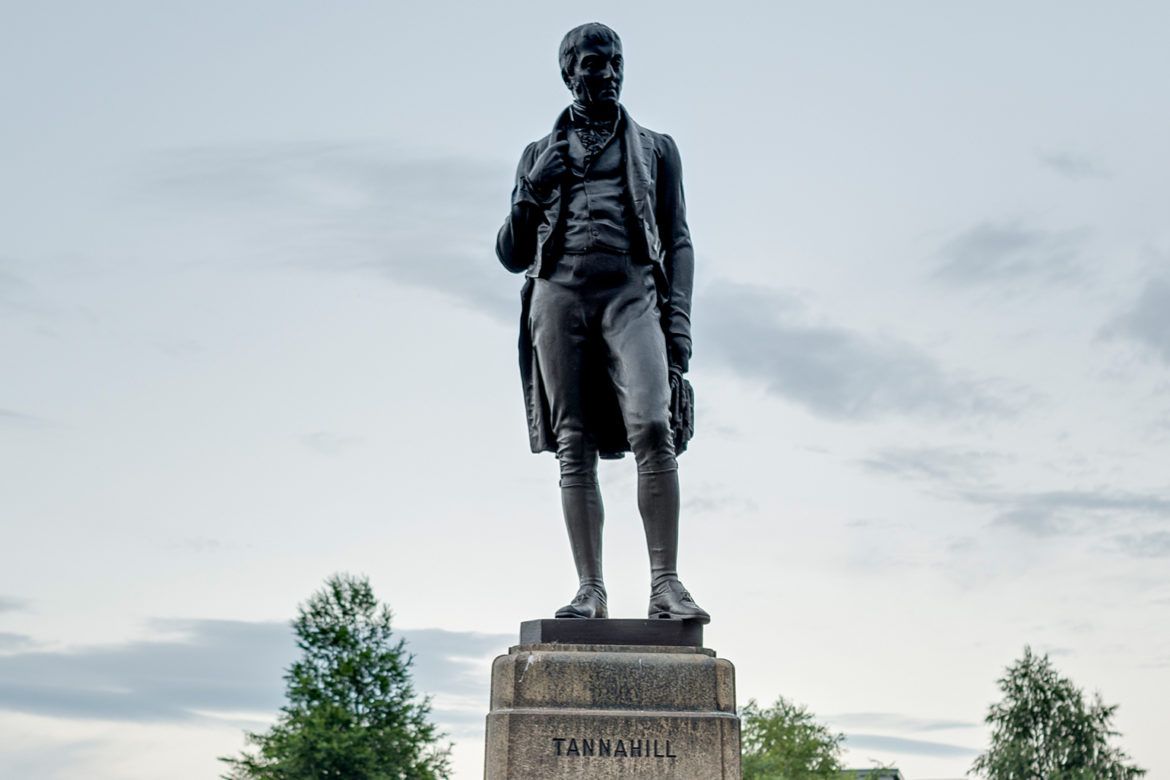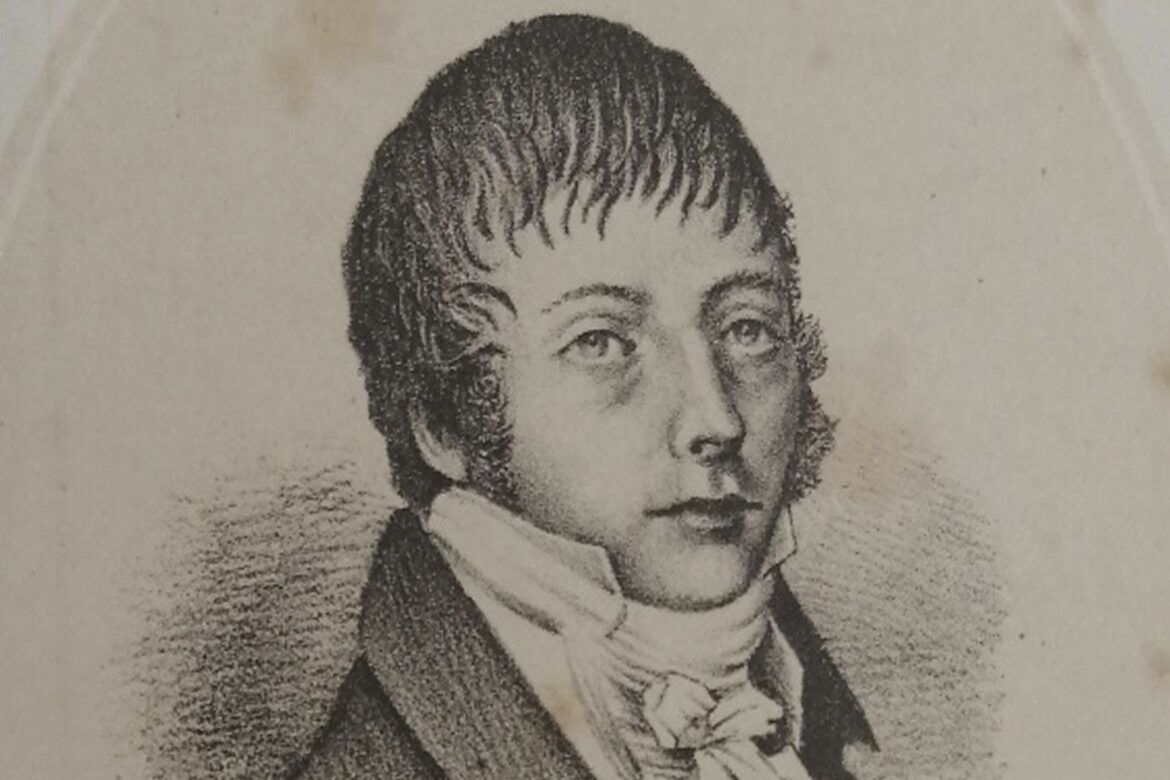There is no doubt that a strong connection between the weaving of textile and fabric and the weaving of language and words existed for the many poets who took part in both.
Often, we think of creative thinkers as embedded only in one world, while in fact many engage with multiple mediums of artistic endeavour.
Renfrewshire has no shortage of weavers who were poets and poets who were weavers in the 18th century. The most well-known is undoubtedly Robert Tannahill (b.1774) who was dubbed “The Weaver Poet.” Born into a family lineage of silk weaving he supported his family with both words and fabric and formed the Burns Club in Paisley. In the preface to the memoir of his life Philip A Ramsay writes, the airs he hummed over while plying the shuttle, and as the words arose in his mind, he jotted them down at a rude desk which he had attached to his loom (xv). This connection between his loom and his poems earned him his nickname and he is perhaps the best remembered of the weaver poets of the 18th century.
However, he wasn’t the only weaver who composed while working and several others too found their calling in words and textile. Robert Allan (b.1774) was both friend and contemporary to Tannahill and a weaver as well. Best known for his songs, he wove muslin and it is said that his compositions were a result of the long hours he spent at the loom. Perhaps then this is the connection between these poets and the weaving heritage and occupation, hours spent without radios or mobile phones. One can imagine the rhythm of the loom and the words and language and songs forming within them. In 1815 John Nielsen, grocer and trustee for education wrote of the famous poets more here is meant to allude to the practice of weavers, who, having their hands more employed than their minds, amuse themselves frequently with songs at the loom (xvi)
Alongside Tannahill and Allan was the poet and later immigrant to America and ornithologist Alexander Wilson (b. 1766) who followed this pattern working as a weaver and composing lines and dedicating himself to poetry. Wilson not only composed poetry and songs but was a great lover of satire, landing himself in trouble in 1792 when he used satire to express a dispute between manufacturers and weavers, as explained in the introduction to the 1844 edition of his collected works Wilson, ever willing to succour the injured and oppressed (as the weavers considered themselves at that memorable time) and composed a scathing poem “The Hollander” which ultimately landed him in jail and saw the poem ‘destroyed’ in a public event (xxi). For Wilson then his weaving was not only a source of space to compose his poems, but also a site of resistance and radicalism.
Each of these poets found a life of creativity that reached beyond the loom and not only saw successes in their own time, but are still remembered today. Perhaps one of the most interesting things of note that contributes to these poet weavers is that each would have been educated and able to read and write. More than labouring at a trade, each would have had the skills necessary to pursue several creative endeavours.


